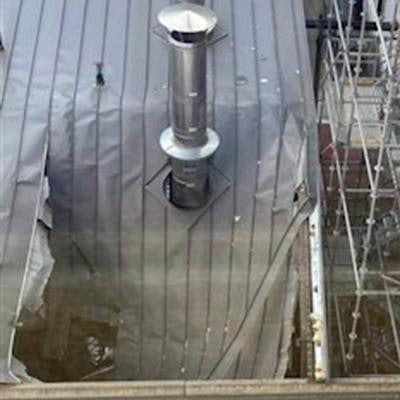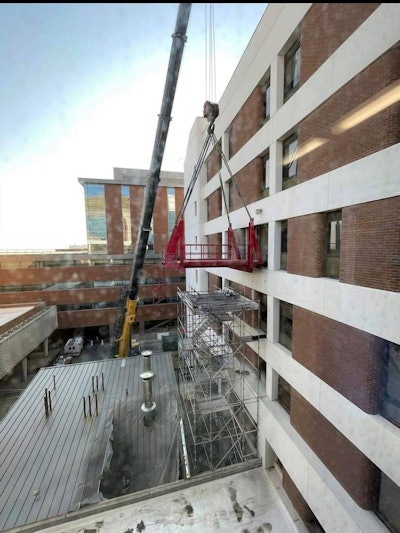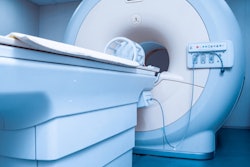
The medical imaging community was sent reeling on September 15 when a worker was killed in the process of moving an MRI scanner from the fourth to the first floor of the University of Utah Hospital in Salt Lake City. And although accidents like this are uncommon, they can be deadly.
The worker was identified as Pat Bailey in a GoFundMe appeal to support his partner. The company with which he was employed has not been named, and the hospital has not released any further information besides a statement dated September 16 in which Alison Flynn Gaffney, executive director of the university's hospital service lines and system planning department vowed to "work [with] all parties involved to understand what happened and identify the root cause."
The Utah Labor Commission is investigating the accident, but as it is "a current active investigation underway ... [we] can't comment on the incident at this time," public information officer Eric Olsen told AuntMinnie.com.
 Photos taken by a University of Utah Hospital employee. Shared by Tobias Gilk, senior vice president of Radiology-Planning, founder of Gilk Radiology Consultants.
Photos taken by a University of Utah Hospital employee. Shared by Tobias Gilk, senior vice president of Radiology-Planning, founder of Gilk Radiology Consultants.A report on the accident from the Salt Lake City Tribune noted that a fire department hazmat crew was the initial responder -- which could indicate that there was concern about a helium leak, according to Tobias Gilk, senior vice president of Radiology-Planning, founder of Gilk Radiology Consultants, and an MRI safety advocate.
"When an MRI scanner is transported like that, it's usually demagnetized," he told AuntMinnie.com. "But while the scanner was likely not magnetized, it would likely have been full of hundreds to thousands of liters of liquid helium, and if it fell through a roof would probably crack like an egg. I suspect that's why the hazmat team was deployed."
 Tobias Gilk.
Tobias Gilk.How are large pieces of medical equipment like the University of Utah's MRI scanner moved? Typically, a hospital hires a rigging company to do the job, which demands precise logistical planning, according to Ron Courtamilia, president and owner of Viking MRI Rigging & Logistics in Oakbrook Terrace, IL. Viking is not the company hired by the University of Utah to move its scanner.
"Everything is tied down," he told AuntMinnie.com. "The MRI machine is attached at four corners to a steel platform, which is then secured to the floor of the loading area. The workers are harnessed to the building -- in fact their harnesses are hammer drilled into the floor."
Scanners weigh between 10,000 and 40,000 lb, with open-magnet MRI machines on the heavier end compared to helium-filled, closed-bore devices. The cost to move an MRI scanner can range from $6,500 to $30,000, depending on the size of the machine, the size of the crane needed, risk assessment, and the physical logistics, Cortamilia said.
Most reported MRI accidents involve patients or staff being injured by metal in the MRI suite. But occasionally, industrial accidents do occur, although they are uncommon, according to Cortamilia.
"Here at Viking, we deliver more than 400 MRI scanners per year without incident," he said. "Something of this magnitude doesn't happen very often in the industry -- maybe half a percent of jobs in a year."
While rare, MRI accidents during rigging do happen and the combination of the weight of the MRI scanners and the presence of hundreds or thousands of liters of liquid helium inside mean that people nearby are at risk from both the fall of the scanner and the cryogenic gas that will likely be released, Gilk told AuntMinnie.com.
"Professional riggers -- who move large, heavy, delicate objects all the time -- are typically extremely cautious to take extra steps to prevent damage or injury. From the photographs of the accident scene [at the University of Utah], it's not immediately clear what failed, or what protections were in place when the accident happened."




.fFmgij6Hin.png?auto=compress%2Cformat&fit=crop&h=100&q=70&w=100)




.fFmgij6Hin.png?auto=compress%2Cformat&fit=crop&h=167&q=70&w=250)











